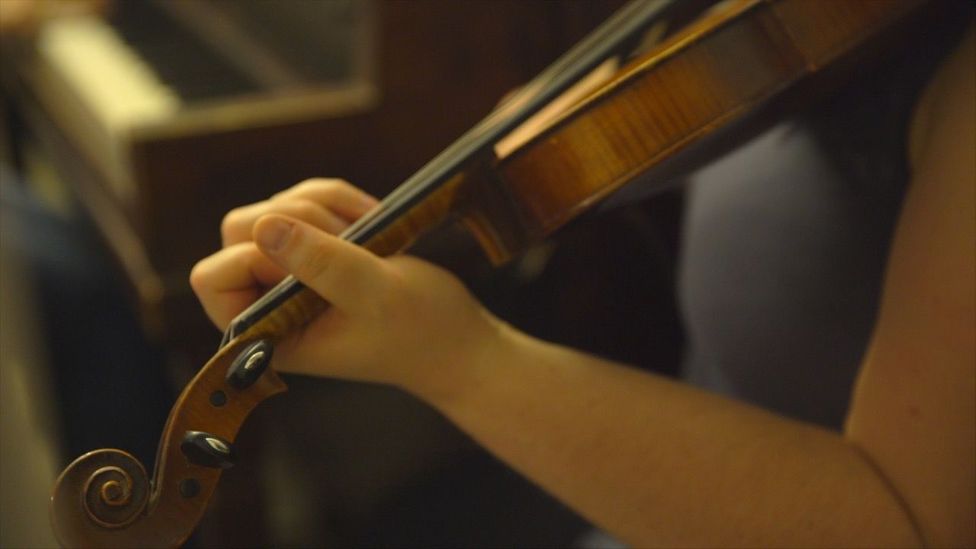
Close-up of a fiddle player in Cape Breton, Nova Scotia (Credit: Eliana Alvarez Martinez)
No matter where you go now on Cape Breton Island, you’re going to hear fiddle music, said Austin Patterson.
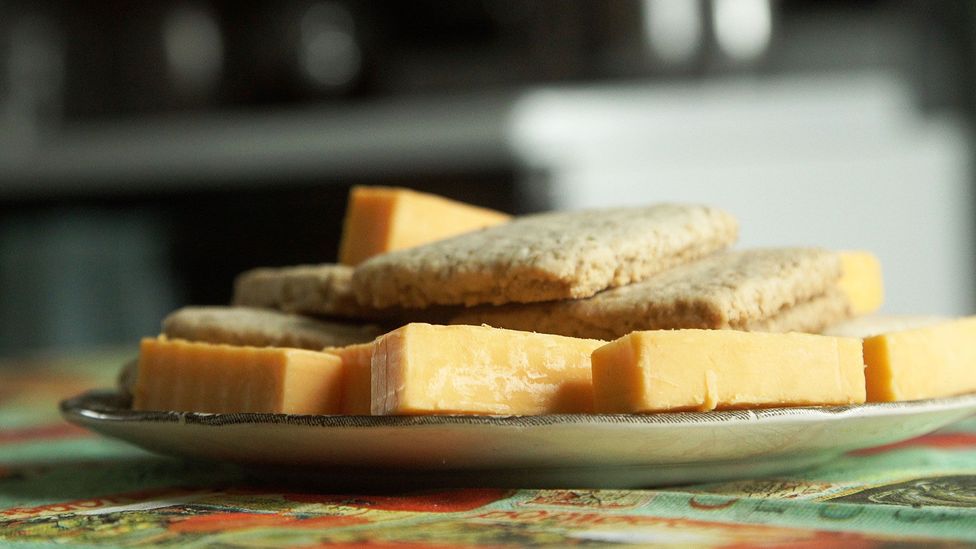
A plate of homemade cakes in a kitchen on Cape Breton Island, Nova Scotia (Credit: Eliana Alvarez Martinez)
A Cape Breton ‘kitchen party’
On a rainy Friday afternoon, Dale Gillis stepped into his Aunt Sandra’s kitchen carrying an old teak table top. “A little dancing board,” he said, referring to how the house’s soft grey carpet was not a suitable platform for the evening’s festivities. That day, they were preparing to host a ceilidh, a special party that would involve food (like oatcakes and cheese), drink, and plenty of music and dancing – and include the whole of Scotsville, a small town tucked into a remote corner of Cape Breton Island in the Canadian province of Nova Scotia.
Pronounced ‘kay-lee’, ceilidh is a Gaelic word for a gathering of people or a visit. On Cape Breton, these often impromptu get-togethers – commonly referred to as ‘kitchen parties’ – have evolved from the early days (when people settled here from Scotland in the 18th and 19th Centuries) to centre on fiddle music.
“A kitchen party happened at that time because it is the central room of the house, it was the central source of heat, it was where you had your food and all the things that happened in a general way of life,” said Allan Dewer, music director at the Celtic Music Interpretive Centre. “And because they were sitting around having a drink or a meal, it was easy to take out a fiddle – and in some of the older homes, the piano was actually in the kitchen.”
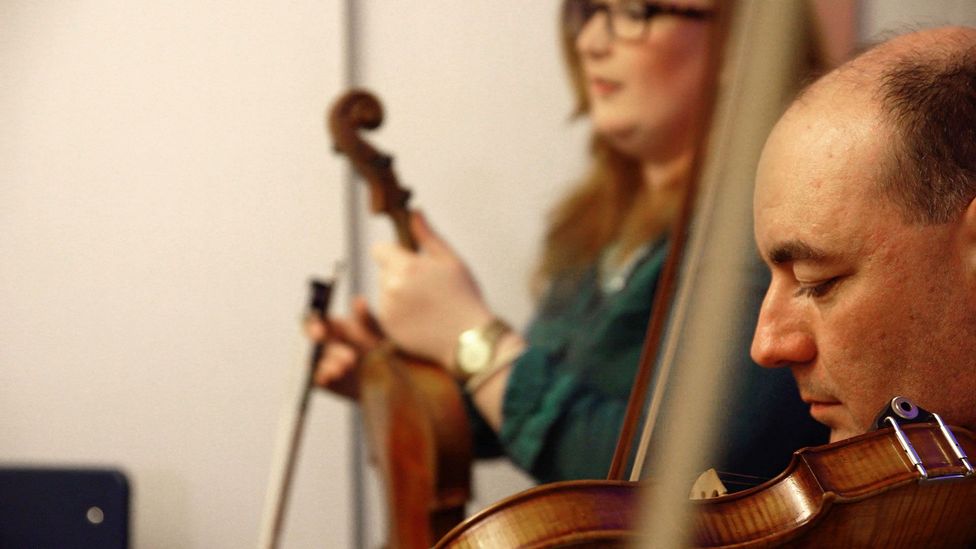
Musicians play fiddles on Cape Breton Island, Nova Scotia (Credit: Eliana Alvarez Martinez)
A fiddle in every household
With its roots in Gaelic culture, the ceilidh is a true slice of Cape Breton life. But over the years, it has faced some challenges as islanders have lost (and regained) interest because of modern life and lack of time.
According to local resident and general store owner, Austin Patterson, “There was a fiddle in every household and no doubt a person in every household that could play. That died away for a number of years until people realised what was happening and took an interest in it.”
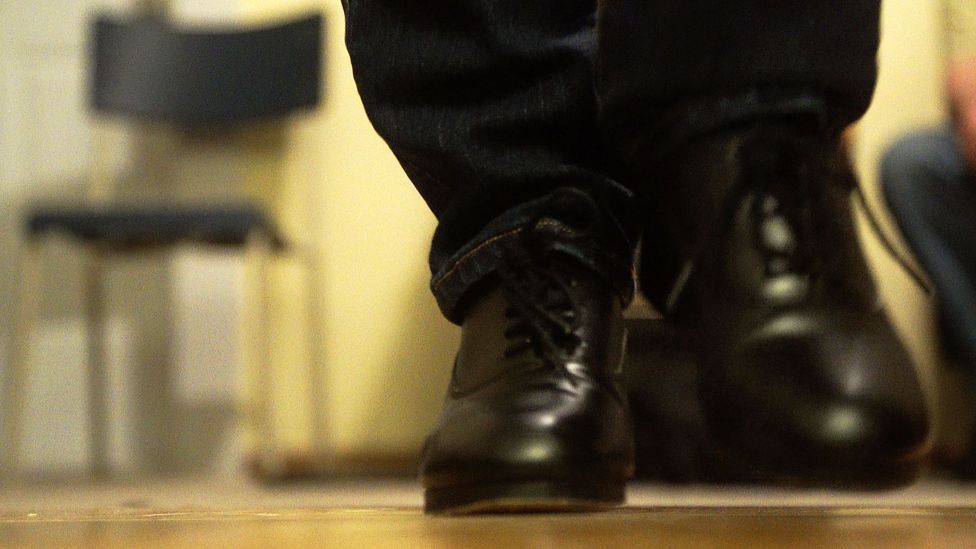
A step dancer on Cape Breton Island, Nova Scotia (Credit: Eliana Alvarez Martinez)
A family of musicians and dancers
The Gillis family has certainly done its share in keeping the tradition alive. Dale, along with his siblings Krista, Kyle and Pat, are all avid musicians (or a step dancer, in Krista’s case) despite their busy day jobs. They grew up with the music and continue to play at the home of their Aunt Sandra, who is a master of the resident piano.
On that Friday evening, presumably like other ceilidh nights, they gathered with their family and friends from the community. The modest white house was packed nearly elbow to elbow, and a palpable heat was generated from all the fiddle bowing, piano plunking, foot tapping and step dancing. The floor pulsed in time to the music that filled the entire household.
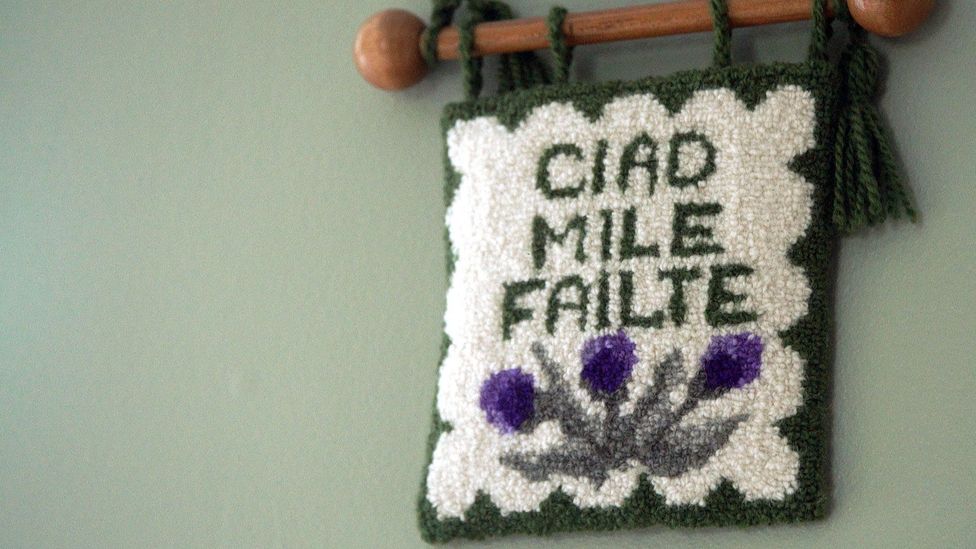
A welcome sign in Gaelic on Cape Breton Island, Nova Scotia (Credit: Eliana Alvarez Martinez)
100,000 welcomes
There’s a saying on the island that’s often seen written on signs, including one on a wall in Aunt Sandra’s kitchen: céad míle fáilte, meaning ‘100,000 welcomes’. For a community that readily invites people into their homes, it seems fitting.
“I think hospitality is a natural thing here, you know, I think people get a satisfaction out of bringing people into their homes and letting them enjoy a ceilidh, an evening together,” Gillis said. “In a way, it’s sad that it is dying out, but the movement to keep it afloat is good.”
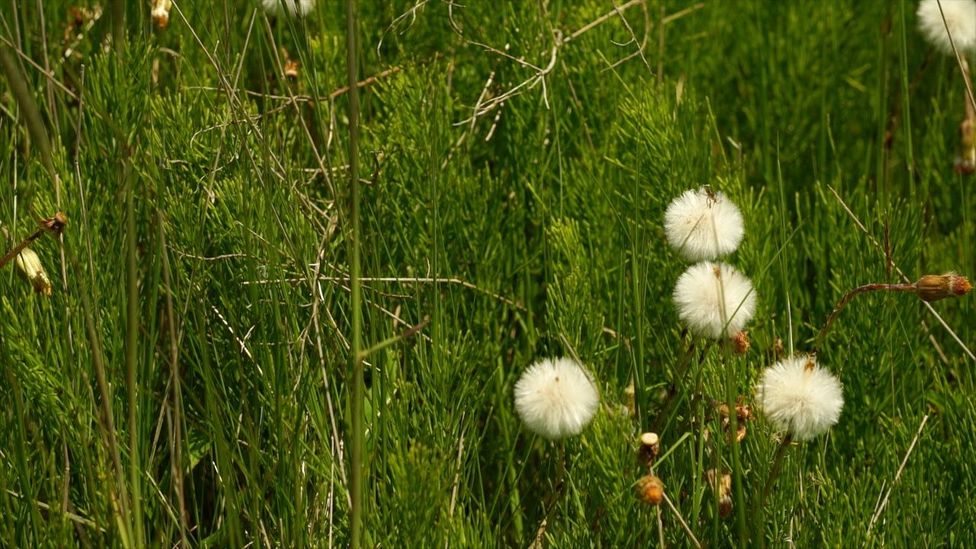
Flowers on Cape Breton Island, Nova Scotia (Credit: Eliana Alvarez Martinez)
An t-ionnsachadh òg, an t-ionnsachadh bòidheach. And that means, ‘Young learning is beautiful learning’, said Carmen MacArthur.
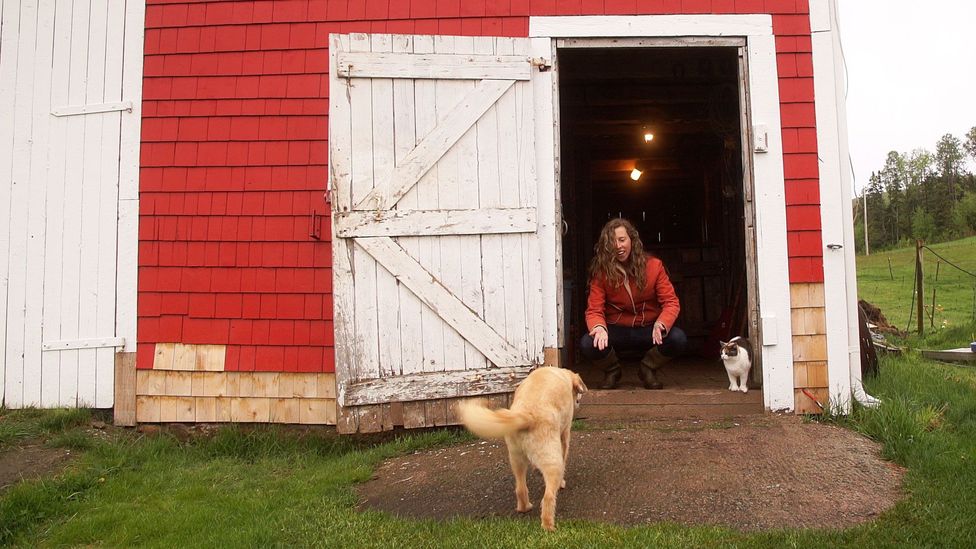
A barn on Cape Breton Island, Nova Scotia (Credit: Eliana Alvarez Martinez)
The revival of a lost language
The ceilidh isn’t the only part of traditional Cape Breton life that people are trying to preserve. Many locals are learning to speak Gaelic – commonly known as Nova Scotia Gaelic – which had nearly become extinct due to an education act issued by the English-speaking majority in the early 1900s that forbade its use in schools.
“My grandmother told me several times that when she started school she had actually gotten the strap for speaking Gaelic, but that was her mother tongue,” Gillis said.
According to Gaelic language teacher Carmen MacArthur, English was also thought of as ‘the language of progress’, so many islanders stopped speaking Gaelic to their children so they wouldn’t be at a disadvantage. However, thanks to enthusiasts like MacArthur, who value Gaelic as an essential part of Cape Breton identity, the language is seeing some resurgence.
“I’d say at least, probably in the last 15 or 20 years, there has been a revival going on. Really since there was an office of Gaelic Affairs established here in the province,” she said. “I’ve noticed a difference – since I started learning – in the number of people wanting to learn.”
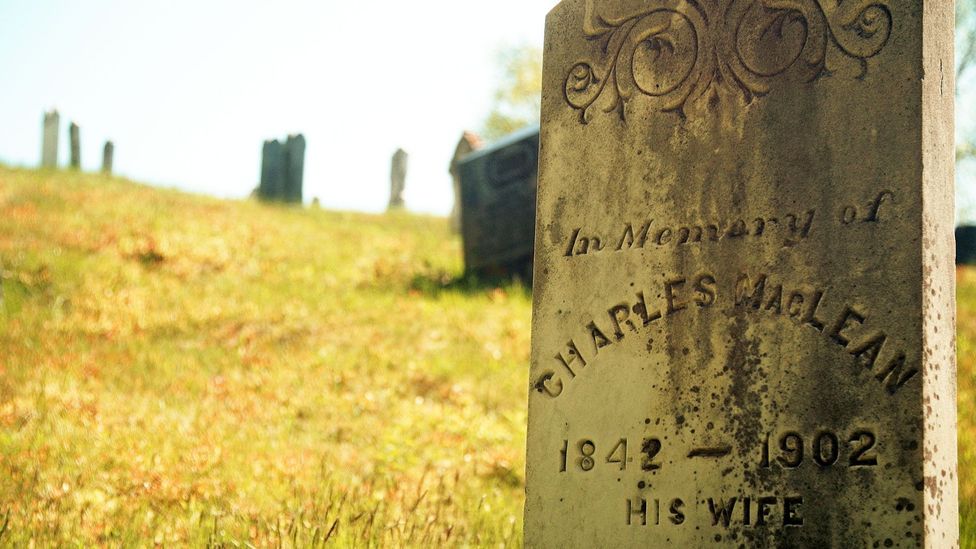
A gravestone on Cape Breton Island, Nova Scotia (Credit: Eliana Alvarez Martinez)
The Gaelic identity
For MacArthur, who moved to Cape Breton (from the town of Pictou, further up the province) about 15 years ago, speaking Gaelic has brought her closer to the community.
“I really just felt like I connected with the Gaels, the Gaelic speaking people – I felt at home with them, they’re very welcoming and very fun, a lot of humour,” she said. “I thought if I could speak to these people in their own native language that I could connect in a much deeper way.”
But on Cape Breton, the Gaelic culture is far more than just language; it also includes fiddle and pipe music, step dancing, storytelling and certain hospitality customs, all of which comes together at the ceilidh.
“Gaelic identity is just… it’s your background, it’s not just language,” Dewer said. “It’s all the pieces that come together that make your daily life, so the friends and family, the close-knit community – people will do things for one another.”
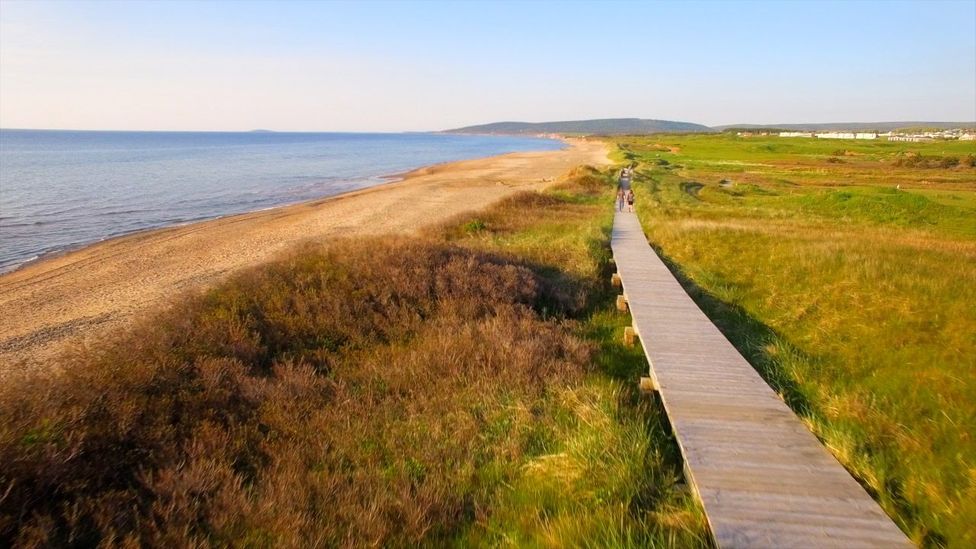
A boardwalk along the coast of Cape Breton Island, Nova Scotia (Credit: Eliana Alvarez Martinez)
Nova Scotia is a Latin word that means 'New Scotland', said Dewar.

View of a golf course on Cape Breton Island, Nova Scotia (Credit: Eliana Alvarez Martinez)
A ‘New Scotland’
For several centuries, this Gaelic culture has closely mirrored its Scottish roots. Starting in the 1700s, thousands of Scottish people were displaced from their homes during the Highland Clearances, when the English monarchy took away their land for its own use. As a result, many Gaels made their way across the Atlantic by ship, landing in the eastern US and Canadian Maritimes. Those who came to Nova Scotia – especially to Cape Breton – held on tightly to their traditions and created a similar lifestyle to the one they had in Scotland.
“The people that came here brought their culture, their language, their music, their dance, anything that was associated with their general way of life,” Dewer said. “They cleared land and became farmers and fisherman and any kind of job that would allow them to create a new life for themselves.”
Curiously, the Cape Breton landscape also seems to echo that of the homeland. Towns have names like Inverness (with its own seaside golf course), Dunvegan, Glendale and, of course, Scotsville. Even the rugged coastline – which leads to the Highlands National Park – resembles the shores of Scotland.
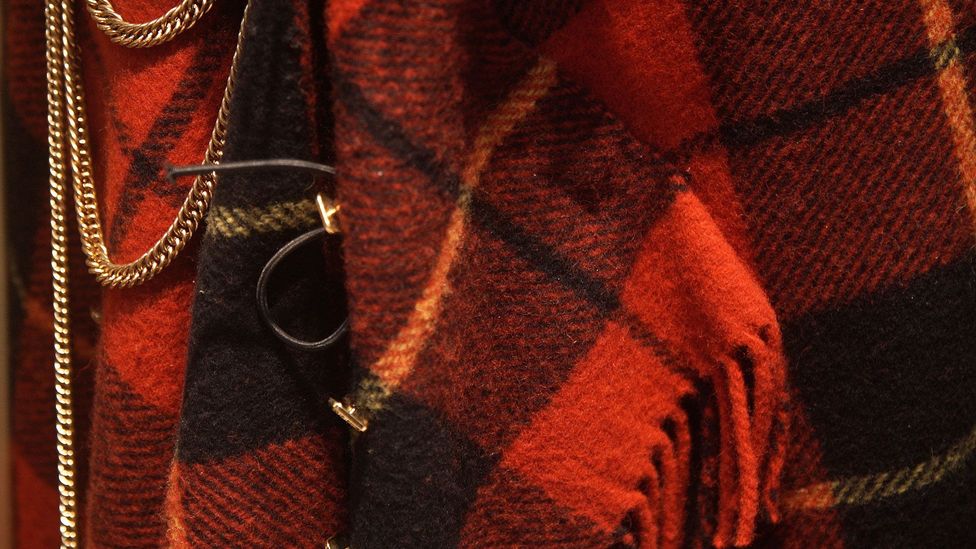
Close-up of a tartan shawl on Cape Breton Island, Nova Scotia (Credit: Eliana Alvarez Martinez)
The island more Scottish than Scotland
Some say that the remoteness of Cape Breton Island, which is connected to the Nova Scotia peninsula by a causeway, has allowed Gaelic traditions such as the ceilidh to endure, even more so than in Scotland.
“I think the tradition has lasted longer here in Cape Breton because of the rural-ness of the area and the [lack of] access to, even if I got my history right, power,” Gillis said. “This area didn’t have power until the mid-‘50s.”
While Gaelic music and culture in Cape Breton is rooted in Scottish tradition, it has evolved differently. According to Dewer, “A lot of the music in Scotland today has a Scottish sound in terms of what people recognise today, but it really has a lot of classical English influence.” In Cape Breton, aspects of the highland culture were well preserved. “Step dancing is something that is very high profile in the area, and the fiddling especially,” he said.
However, both locales have been making a concerted effort to forge an ongoing connection to each other and keep traditions alive, including holding the annual Ceolas festival on the Scottish island of South Uist, which brings over musicians from Cape Breton to share their talents and ancestral knowledge.
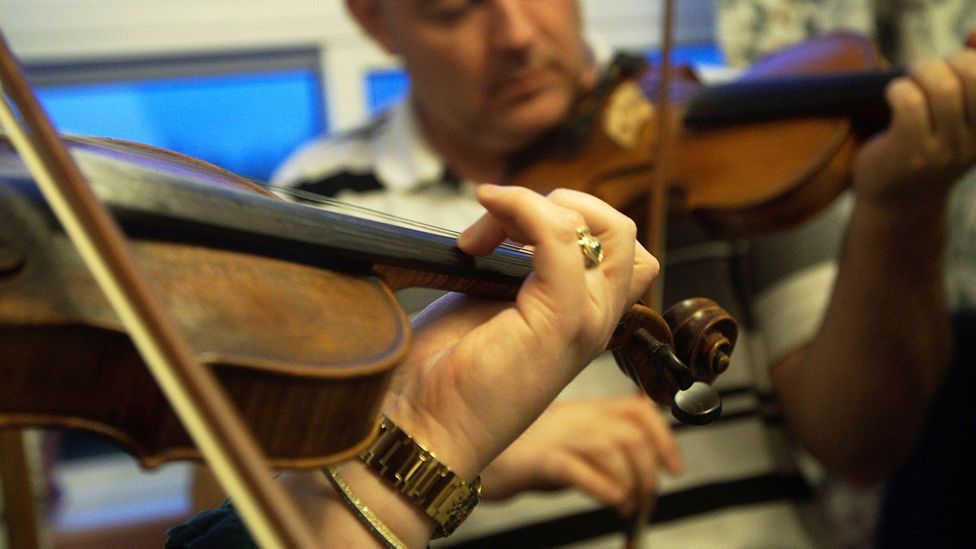
Fiddle players on Cape Breton Island, Nova Scotia (Credit: Eliana Alvarez Martinez)
The ‘vanishing Cape Breton fiddler'
Gaelic revivals have come and gone on Cape Breton Island over the decades. In the early 1970s, the local news picked up on the idea of the ‘vanishing Cape Breton fiddler’, which had become a common catchphrase in the area. This, according to Dewer, “Struck a nerve with everybody because within the tightknit communities there was not really a decline.”
Though traditions might have been fading in the broad sense, the people rallied.
“They took it upon themselves to say, you know, we’re not going to stand for this, we’re going to show that you’re wrong,” he said. “So they rounded up dozens and dozens, which turned into hundreds, to put on a display. And we now have all these fiddlers and the tradition is alive and well.”
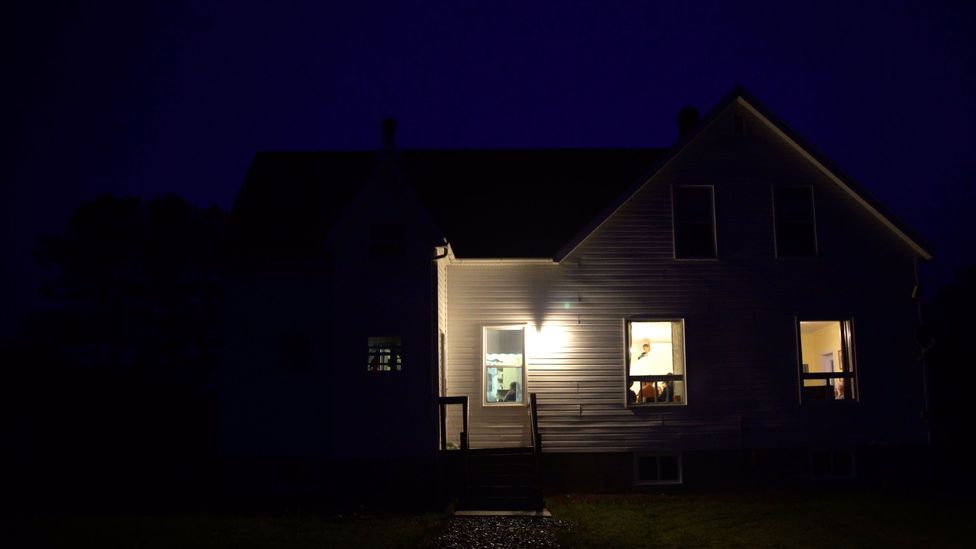
A house on Cape Breton Island, Nova Scotia, at night (Credit: Eliana Alvarez Martinez)
A party with no end in sight
This last statement appears to hold water. Late that Friday evening, whenever things would start to wind down, a new twist would keep the party in motion.
Guests of the Gillis’, nearly the whole town of Scotsville, continued to sip whisky (made at the local distillery, of course) and dive into the casseroles piled on the table, which seemed to multiply as the night wore on. After a pause between musical sets, people clasped hands and spontaneously started singing ballads in Gaelic while swaying back and forth. At midnight, a lone bagpiper arrived, took a seat in the living room and belted out a tune so powerful it could have made the dead step dance happily in their graves. Then everyone stood up, locked arms and slipped effortlessly into a coordinated square dance.
Despite being bound by the confines of the small kitchen, their enthusiasm was boundless. It seems the ceilidh – and all things Gaelic – are more than alive and well in Aunt Sandra’s house.